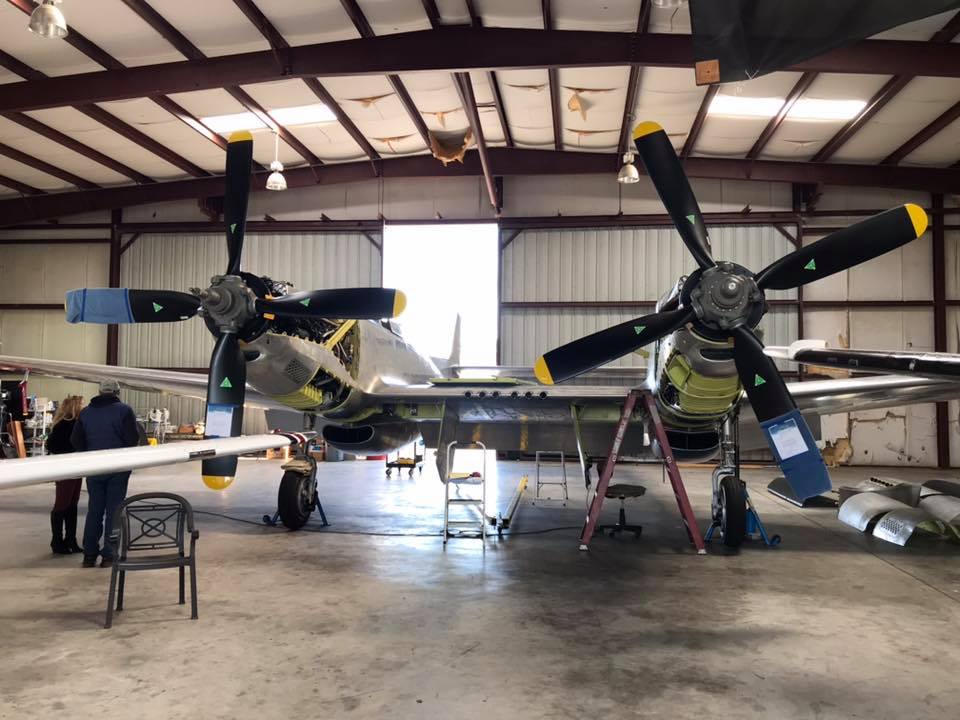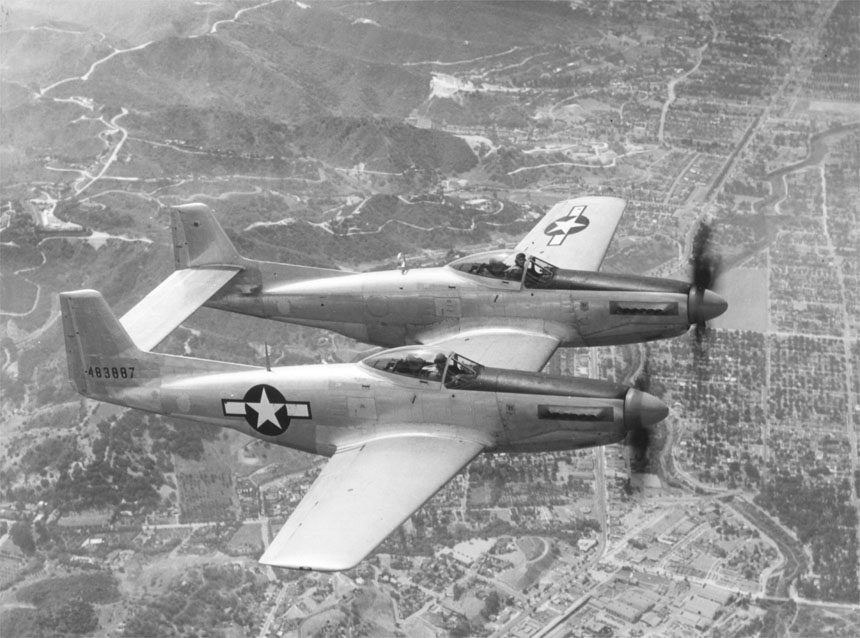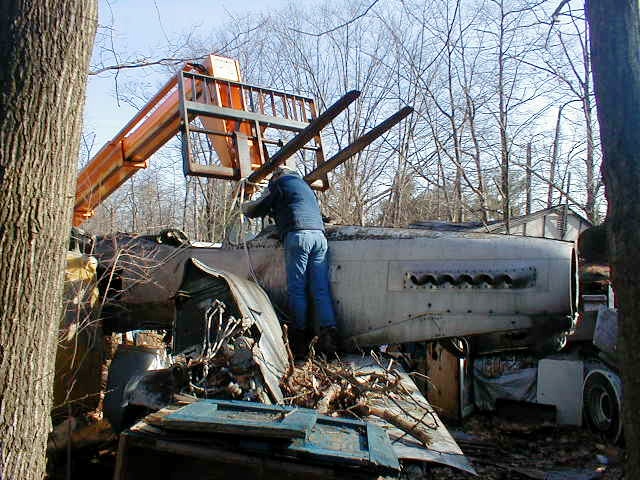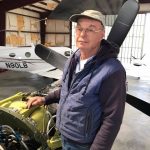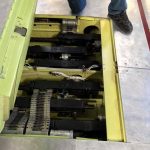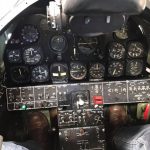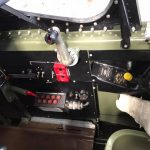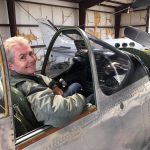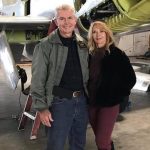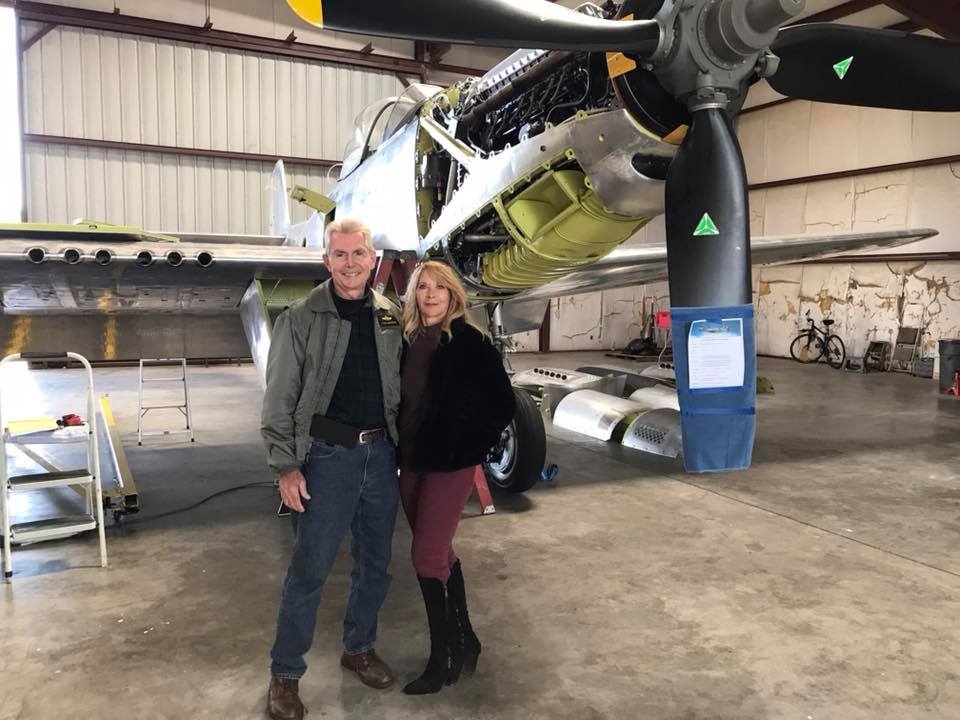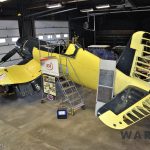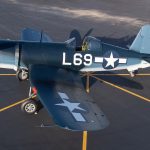TOM REILLY AND THE XP-82 TWIN MUSTANG
By: Alan Armstrong
The Genius – Tom Reilly
A genius is a person who displays exceptional intellectual ability or creative productivity. Tom Reilly has amply demonstrated these characteristics in the course of his decades-long career restoring vintage military aircraft, and has earned his place as a legend in the warbird community. Perhaps no project better illustrates Tom’s genius than the magnificent efforts he and his team have made in resurrecting North American XP-82 Twin Mustang 44-83887. A crowning achievement to Tom’s career, the XP-82 Twin Mustang is a remarkable specimen of aeronautical design and technology. Her restoration is a testament to the dedication and resolve Tom has demonstrated in completing this remarkable project that has spanned more than a decade from inception to completion.
The Specimen – Tom’s XP-82 Twin Mustang
The first thing that strikes anyone when approaching the XP-82 is her sheer size. She is a mammoth beast in comparison to any contemporary fighter aircraft of the day! The massive four blade propellers project skyward, and the twin fuselage structures tower above you. The wing leading edge sits at head-height, rather than meeting your shoulder. In short, the Twin Mustang is imposing, and projects her true nature as a complex, purpose-built killing machine. The center wing section houses six fifty caliber machine guns. Originally conceived to escort B-29s on extreme-range bombing missions, her 604 gallon internal fuel capacity reflects this capability. Outer wing hard points were available for drop tanks, if additional range were needed too. The Twin Mustang was fast as well, with a max true airspeed at altitude of around 440 miles per hour.
The electrical, hydraulic and fuel systems are complex in comparison to other WWII fighters, and mark a transition point in period technology. Tubing, wiring and hoses are routed throughout the wing and fuselage structure. Everything about this aircraft is robust, sturdy and purpose-built for service and combat in harsh conditions. The left and right cockpits are very similar, except for the center console on the left side. Also, the left cockpit is the only one with a gunsight, while the right side has a gun camera in its place. Switches and circuit breakers abound to the right of the pilot’s left hand seat. Because of the aircraft’s significant size, its control surfaces are commensurately large, which places a higher demand on the pilot’s strength for maneuvering than contemporary piston-powered fighters. Rudder forces, however, were light. The pilot has two throttle, mixture and propeller governor controls to the left. With its twin fuselage and tail wheel configuration and considering its massive propellers with the associated torque and P-factor they must generate on takeoff, the prospect of an engine failure at rotation is not something any pilot would relish. However, the aircraft’s engines (and propellers) rotate in opposite directions, much like those of the P-38, which helps mitigate any gyroscopic effects during normal operation.
The Quintessential XP-82 Twin Mustang
The level of detail and authenticity in Tom’s XP-82 restoration is extraordinary. Every system, component, placard, stencil, etc. that appeared on the factory-fresh aircraft back in June, 1945 appears in Tom’s restoration. Even a small factory fabrication mistake has been replicated in this aircraft; the pitot static vent was incorrectly positioned initially and then repositioned during her original manufacturing process. As a result, the restored XP-82 has preserved this tiny historical detail by replicating the holes for the incorrectly located static air port in the left fuselage and plugging them, in exactly the same way.
Mike Nixon’s Vintage V12s in Tehachapi, California overhauled the super-rare Packard-built Rolls-Royce Merlin V-1650-23 (right-turning) and -25 (left-turning) engines for the project. The carburetors, generators, and other components are all New Old Stock and/or freshly overhauled. The only significant deviation from the original design must be the propellers, of which airworthy originals were unavailable at any price. MT Propellers in Germany manufactured composite replicas for the project. The tires are new. The wheels are new. The brakes are new. A mountain of yellow tags and FAA 8130 Forms verify the pedigree of this magnificent aircraft. The radio equipment is installed, just like the radios the aircraft had when she was built. Even the shade of yellow primer paint used on the interior structures has been painstakingly researched and matched.
Origins of the XP-82 Twin Mustang and Tom’s Prototype
Tom’s XP-82 flew on April 15, 1945, the first flight for the entire breed. Following their time in flight test for the Twin Mustang program, both XP-82s (44-83887 and ‘886) served as test bed aircraft with the NACA, (precursor to NASA). Some of the testing involved equipping the aircraft with various ordinance configurations, including an eight-gun pod that hung on the center wing and fired between the propellers. A similarly positioned radar pod was also tried. Prototype Twin Mustang ‘887 flew with the NACA until July, 1950 when it was damaged in a landing accident while performing trials on an experimental ram jet.
(Image Credit: XP-82 Restoration Project)
Famed warbird preservationist Walter Soplata bought the damaged aircraft soon after it was written off for $300.00 without the engines or propellers. Fast-forwards to half a century later when Tom Reilly was at Soplata’s farm on December 23, 2007 and first discovered the XP-82’s left fuselage hidden under some sheet metal roofing. While Tom was in negotiations with Soplata, he quietly went about the job of finding and purchasing whatever Twin Mustang components he could find to make the project viable. After successfully concluding his purchase of the XP-82, Reilly got working on assessing what he had, what he needed, and then plotting the project out. He did have the good fortune of collaborating with the Harker brothers, who are restoring the only other civilian-owned Twin Mustang in the world, F-82E 46-0256. Ironically, this same aircraft also served with the NACA and later became part of Walt Soplata’s collection. The two teams have co-operated on a number of different aspects of their mutual restorations, including the fabrication of certain parts, such as the propellers. Since the F-82E was substantially complete, it also provided many useful reference details for the XP-82 project, although there are a lot of differences between the two variants.
The Date of the First Flight Approaches
Jewell Helton and I visited Tom and his partner Weezie Barendse on November 17, 2018. Tom was extremely generous with his time and gave us a complete tour of his facilities as well as unrestricted access to the XP-82. Reilly had hoped to have the aircraft ready to fly at EAA AirVenture Oshkosh this past summer, but the paperwork wasn’t quite signed off in time. Following the landing incident at AirVenture involving the wheel rim failure on an F7F Tigercat, Reilly decided to replace the XP-82’s original wheel rims with newly manufactured units. This has added a little extra time to the restoration, but after ten years of intense labor, the aircraft is essentially ready to go, and is expected to make her first post-restoration flight in the near future.
Many thanks to Alan Armstrong for his article and photographs!







